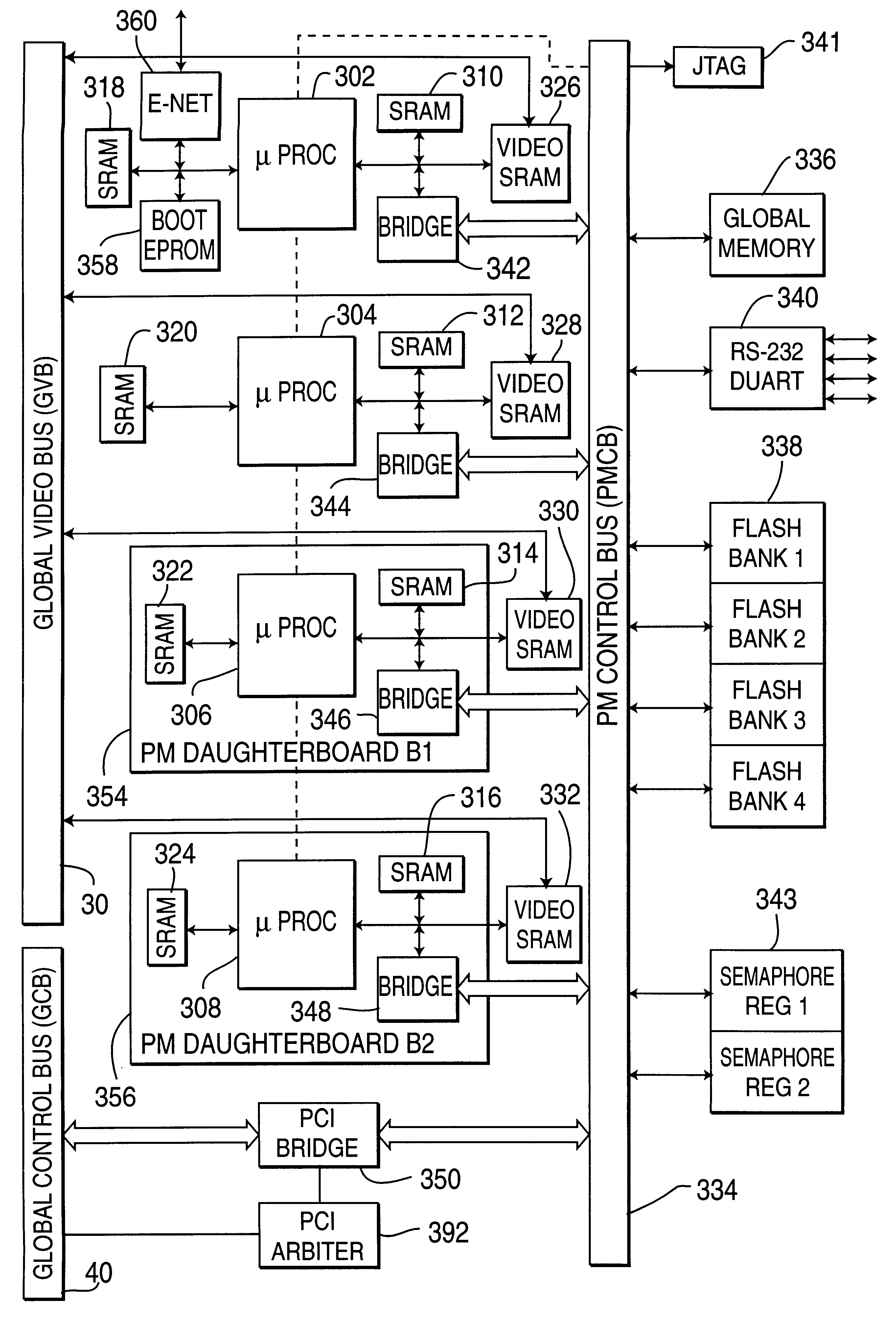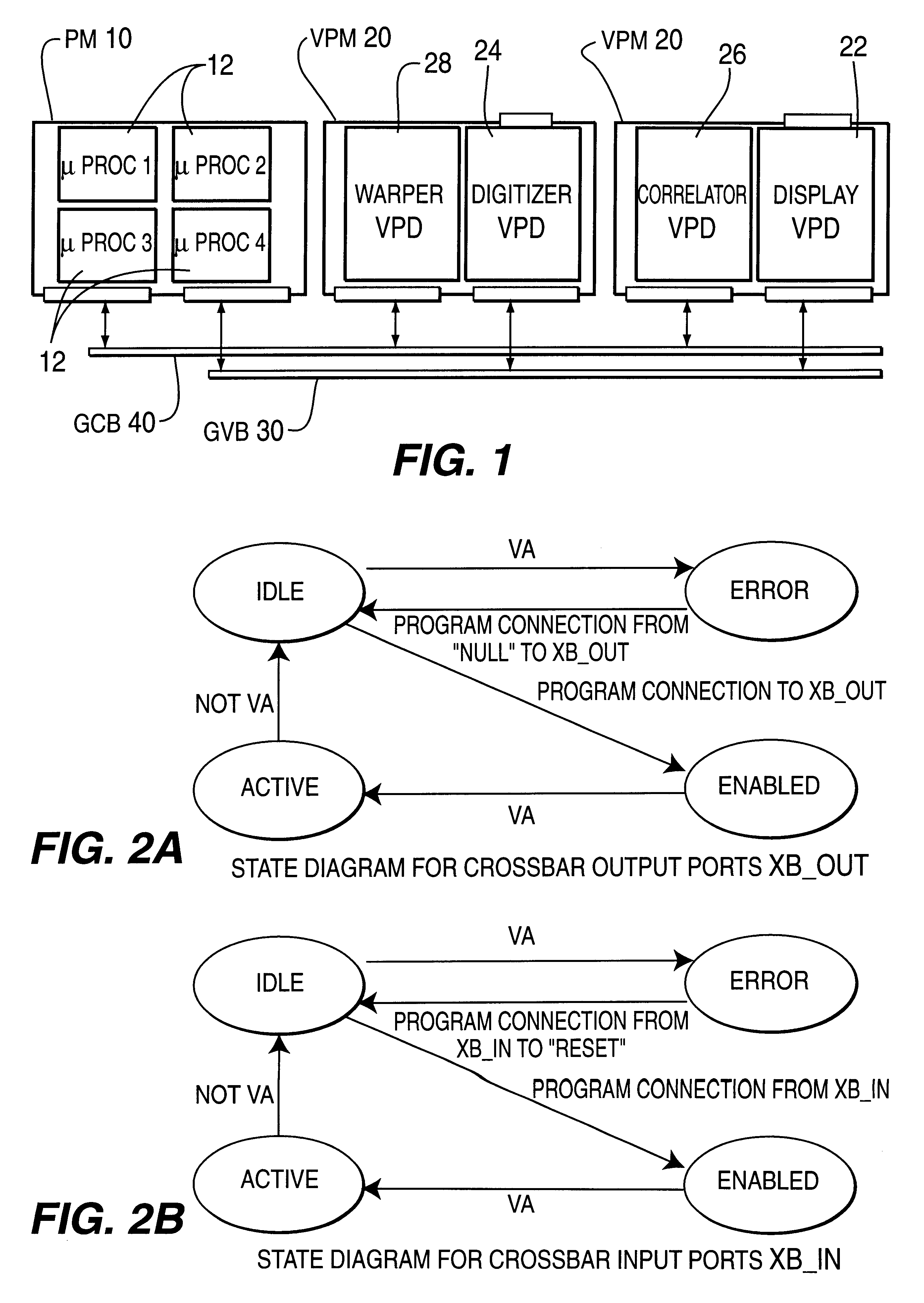Modular parallel-pipelined vision system for real-time video processing
a vision system and parallel technology, applied in the field of parallel-pipelined vision systems for real-time video processing, can solve the problems of inability to provide the data throughput required for both receiving digital video signals and providing full-resolution video display output, and the mv250 also provides limited capability of operating on multi-resolution images
- Summary
- Abstract
- Description
- Claims
- Application Information
AI Technical Summary
Benefits of technology
Problems solved by technology
Method used
Image
Examples
Embodiment Construction
Since the primary purpose of the VPS of FIG. 1 is to perform video processing, the VPM 20 will be described first, then the PM 10 and its hardware control library (HCL), VPDs 22-28, GVB 30, and, finally, GCB 40.
Video Processor Module
A block diagram of the VPM 20 and its interconnections with the GVB 30 are shown in FIG. 2. The VPM 20 provides the basic video processing functions for the VPS. As noted above, multiple VPMs 20 can reside in the VPS, and each VPM 20 can contain up to two video processing daughterboards (VPDs) for specialized functions. In a preferred embodiment of VPM 20 illustrated in FIG. 2, each VPM 20 consists of the following key components:
A 39.times.39 channel non-blocking crosspoint switch 202, 10 bits per channel, representing 8 bits of video data and 2 bits of timing information for each pixel of video data transferred over the crosspoint switch bus.
Four 1K.times.2K pixel frame stores FS1-FS4 (204-210). These frame stores 204-210 are triple-ported, allowing fu...
PUM
 Login to View More
Login to View More Abstract
Description
Claims
Application Information
 Login to View More
Login to View More - R&D
- Intellectual Property
- Life Sciences
- Materials
- Tech Scout
- Unparalleled Data Quality
- Higher Quality Content
- 60% Fewer Hallucinations
Browse by: Latest US Patents, China's latest patents, Technical Efficacy Thesaurus, Application Domain, Technology Topic, Popular Technical Reports.
© 2025 PatSnap. All rights reserved.Legal|Privacy policy|Modern Slavery Act Transparency Statement|Sitemap|About US| Contact US: help@patsnap.com



